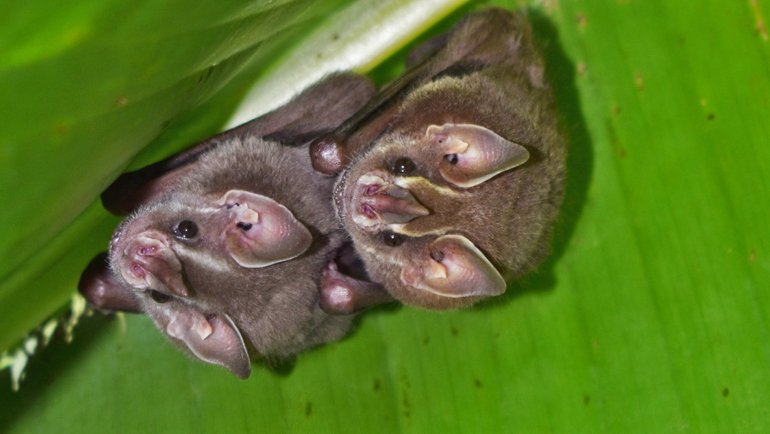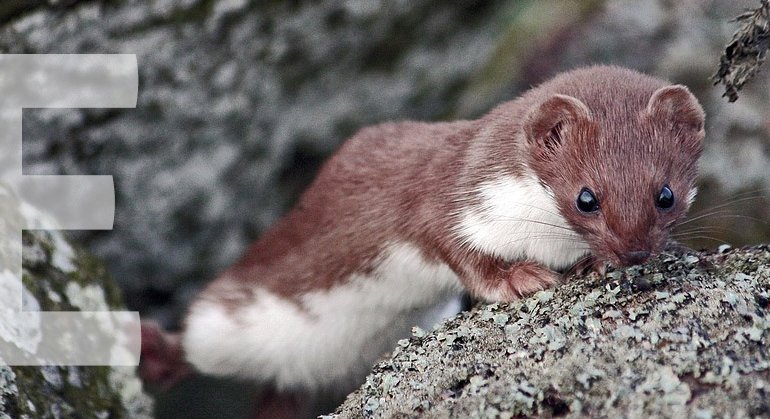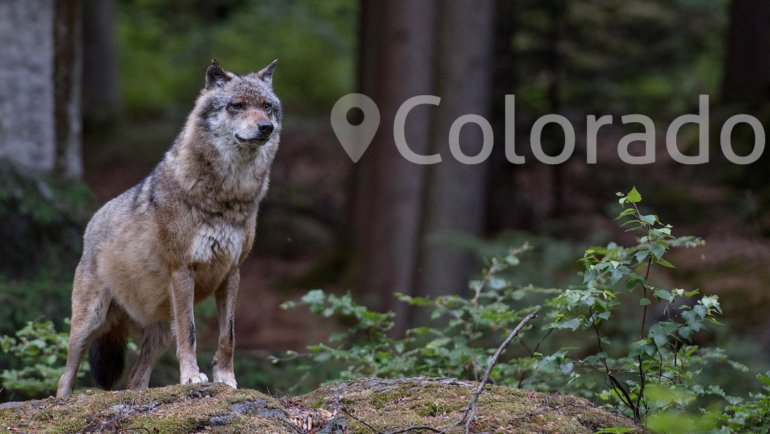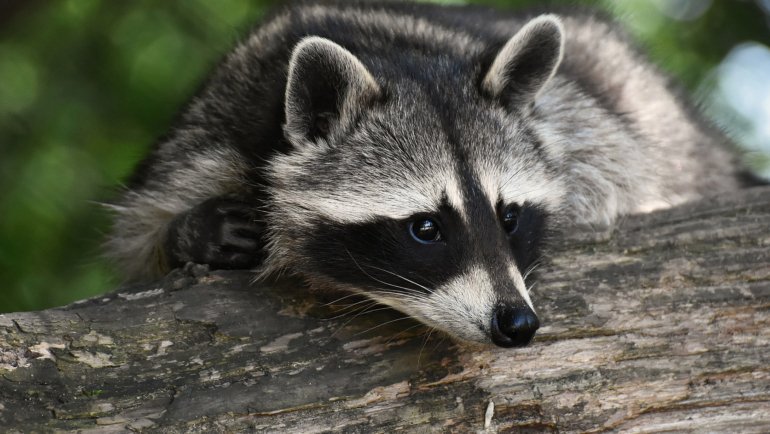The African Wild Dog, also known as the African Painted Dog or Cape Hunting Dog, is a unique and captivating carnivore native to sub-Saharan Africa. Characterized by its mottled coat, large rounded ears, and highly social behavior, this canine species roams the vast savannas, grasslands, and woodland areas in packs.
As one delves deeper into understanding the intricate balance of the African ecosystem, it becomes crucial to explore the diet of these apex predators. Recognizing what the African Wild Dog eats not only offers insights into their behavior and role in nature but also emphasizes the importance of conserving both the predator and its prey to maintain ecological harmony.
What Do African Wild Dogs Eat: Their Primary Prey Items
Medium-sized ungulates: These are the primary food source for African Wild Dogs. Their agile bodies and coordinated pack-hunting strategies are particularly well-suited for pursuing these swift herbivores. Commonly hunted ungulates include:
- Impalas
- Gazelles (like the Thomson’s gazelle)
- Springboks
Larger ungulates: Though less frequent, African Wild Dogs have been observed taking down larger prey, especially when the pack size is larger and can muster more strength and strategy. Some of these larger targets encompass:
- Wildebeests (especially the young or injured ones)
- Young buffalos
- Zebras
Smaller prey: While the larger ungulates make up a significant portion of their diet, African Wild Dogs are opportunistic and won’t pass up smaller game if it’s available. This category includes a variety of creatures such as:
- Rodents (like field mice)
- Hares
- Ground-dwelling birds
Each prey item in the African Wild Dog’s diet plays a vital role in maintaining their energy levels, nurturing their young, and sustaining the overall health of the pack.
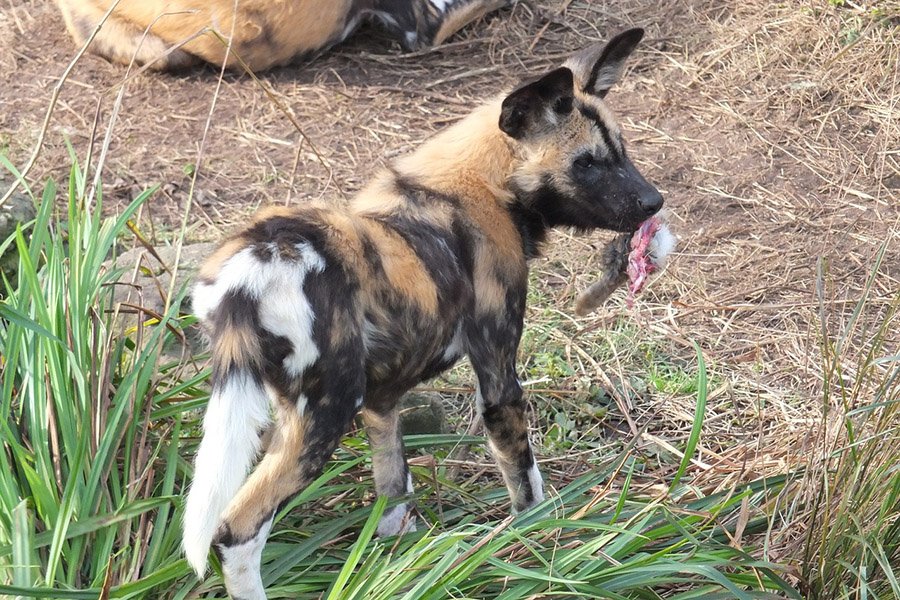
Hunting Strategies and Techniques
Pack Hunting
The African Wild Dog is renowned for its impeccable teamwork when hunting. The pack works in harmony, using coordinated strategies to outsmart and tire their prey.
Larger packs often spread out, encircling and driving prey toward waiting members, while smaller groups might employ a direct chase strategy. This collaboration not only increases their chances of success but also allows them to take on larger prey than an individual would be able to subdue.
Endurance Over Speed
Unlike cheetahs that rely on speed and stealth, African Wild Dogs depend on their stamina. Their hunting approach is a test of endurance, aimed at wearing out their prey.
They can maintain a moderate speed over long distances, often pursuing prey for miles until it becomes exhausted. This relentless pursuit strategy ensures a higher success rate compared to many other African predators.
Kill Techniques
Once the prey is tired and cornered, the dogs use their sharp teeth to bring it down quickly. The dogs target the animal’s flanks and hindquarters, delivering rapid bites to immobilize and subdue it. The pack then consumes the kill on the spot, emphasizing the swift and efficient nature of their hunting strategy.
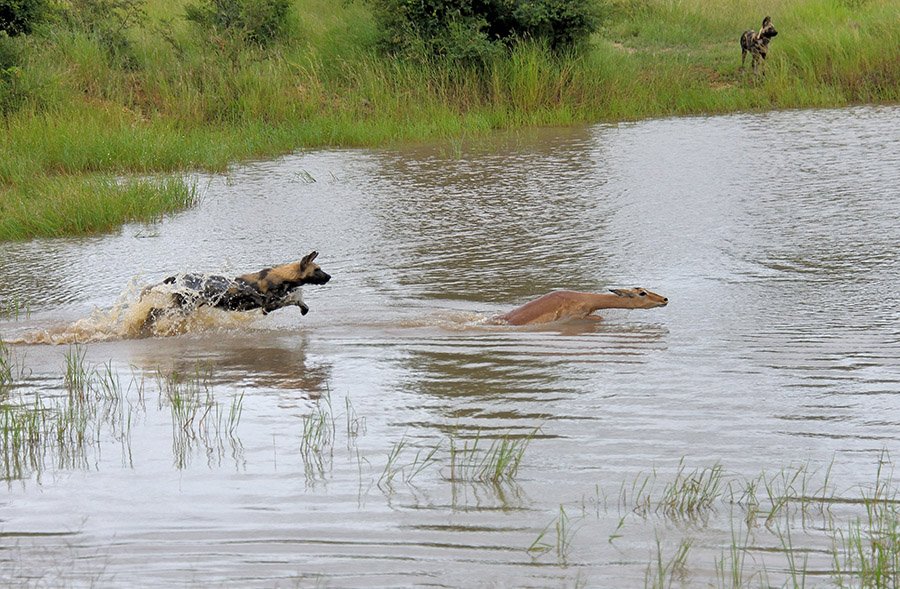
Feeding Behavior of African Wild Dogs
Eating Hierarchy
Within the pack, there exists a feeding order, which surprisingly places the pups at the top. Youngsters are given priority to feed on the freshest parts of the kill, ensuring their growth and survival.
Following the pups, the dominant pair or the alphas get their share, and subsequently, the rest of the pack members feed. This hierarchy underscores the tight-knit social structure and the importance the species places on nurturing its next generation.
Sharing Kills
A poignant display of their social bonds is observed during feeding. Members who might not have participated in the hunt due to injury or other duties like guarding the den, still get their share. Successful hunters often regurgitate food for these members, ensuring that the entire pack is well-fed and united.
Rapid Consumption
In the unforgiving wilderness, food can be quickly stolen by other predators, especially larger ones like lions or hyenas. To counter this, African Wild Dogs have evolved to consume their kills rapidly.
The entire pack descends upon the catch, and within minutes, almost nothing remains of the prey. This quick feeding minimizes the risk of losing their hard-earned meal and ensures that as many pack members as possible get their fill.
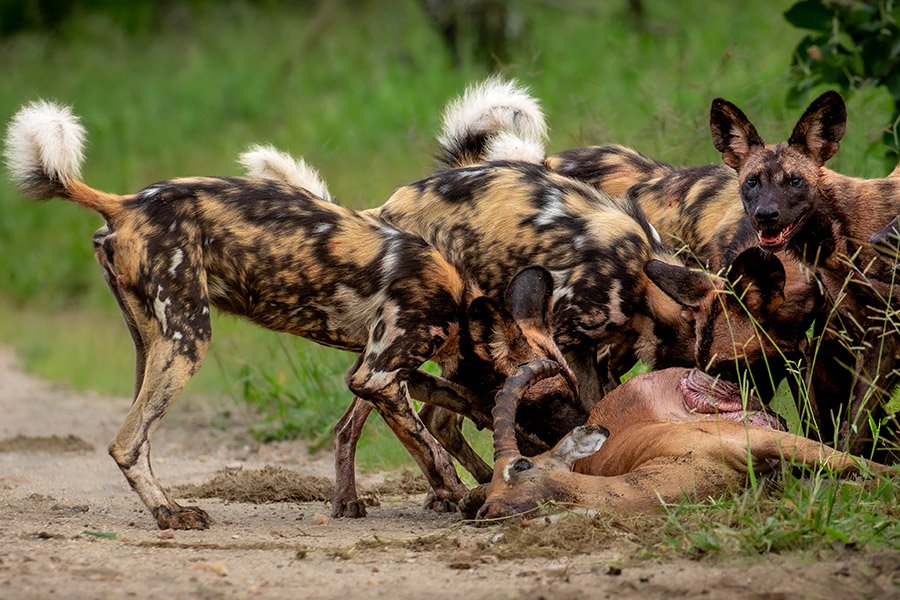
Dietary Adaptations and Benefits
Teeth structure: African Wild Dogs possess specialized dentition tailored for their carnivorous diet. One of the distinctive features is their premolars, which are larger than those of any other canid.
These expanded molars provide a broader surface for shearing meat, enabling them to quickly disassemble prey and consume more in a shorter amount of time. This rapid consumption is essential in an environment where other predators can easily usurp their kills.
Digestive system: Adapted for a high-protein diet, the African Wild Dog’s digestive system is efficient in breaking down meat, bones, and other parts of their prey. Their stomachs can expand, allowing them to consume large quantities of food rapidly.
This is particularly useful because, in their challenging ecosystem, it might be days before the pack makes another successful kill. The ability to digest quickly also means they can vacate a kill site sooner, minimizing encounters with scavengers or larger predators.
Differences from Other Predators
Comparison with lions and hyenas: While all three species are apex predators, they differ significantly in their hunting techniques and dietary preferences. Lions, being much larger, can take down bigger prey such as buffalo and giraffes, whereas hyenas, versatile as they are, alternate between hunting and scavenging.
African Wild Dogs, on the other hand, are more specialized for endurance hunting of medium-sized ungulates. Their cooperative hunting strategy sets them apart, giving them a higher success rate than individual hunters like lions.
The scavenging myth: A common misconception is that African Wild Dogs are primarily scavengers, much like hyenas. However, this couldn’t be further from the truth. While they might occasionally scavenge, especially during desperate times, their primary source of food comes from their coordinated hunts. Their preference is fresh kills, as emphasized by their specialized hunting and feeding adaptations.
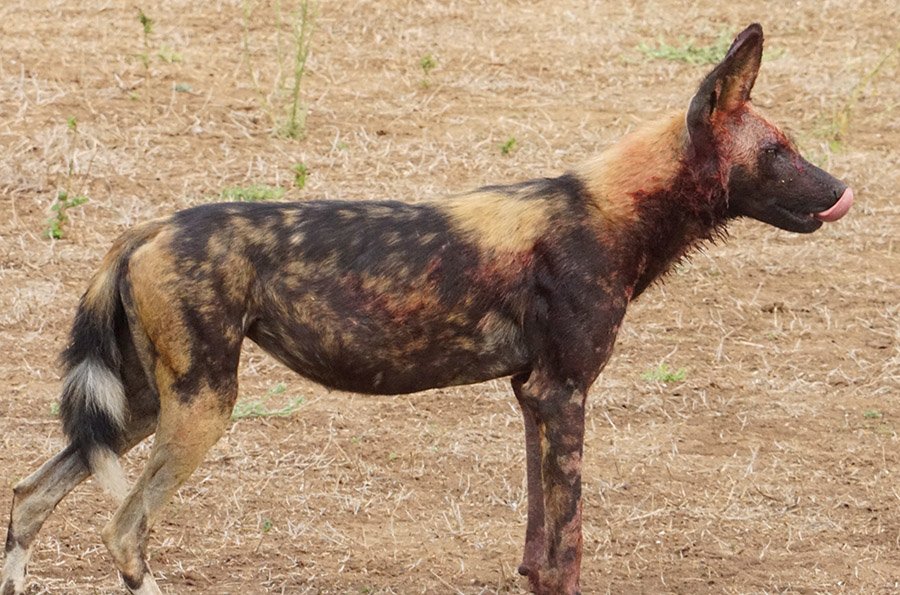
Impact of Diet on Habitat and Migration
Availability of prey: The nomadic movements of African Wild Dogs are largely dictated by the abundance or scarcity of prey. In areas where prey is bountiful, they might establish temporary territories, but scarcity can force them to move vast distances in search of food.
Seasonal changes in diet: With the shifting seasons, the availability and type of prey can change. For instance, during the wet season, when newborn ungulates are more prevalent, the wild dogs might target these easier catches. Conversely, in drier periods when prey is less abundant and more dispersed, the dogs may have to cover larger areas and might occasionally resort to smaller prey like rodents or birds.
Frequently Asked Questions
Do African Wild Dogs eat fruit?
No, African Wild Dogs are obligate carnivores, which means their diet consists primarily of meat. They are highly specialized for hunting and consuming animal prey. While they might occasionally ingest plant matter found in the stomachs of their herbivorous prey, they do not actively seek out or consume fruits.
How often do they need to eat?
African Wild Dogs ideally hunt every day, but the success of their hunts can vary. On days when they make a big kill, it can sustain the pack for a couple of days. However, if they fail to capture prey for a few days in a row, it becomes imperative for the pack to make a kill soon, as they cannot survive without food for prolonged periods. Younger dogs, especially pups, require more consistent feeding to ensure their growth and health.
What percentage of their hunts are successful?
African Wild Dogs boast one of the highest hunting success rates among large predators in Africa, often cited between 60% to 80%. This success is primarily due to their cooperative hunting strategies and their endurance, which allows them to wear down their prey over long distances.
Do African wild dogs drink water frequently?
While African Wild Dogs do need water, they can go for longer periods without drinking compared to many other animals. This adaptation is crucial in the semi-arid regions they often inhabit. However, they will drink daily if water sources are available.
Can African Wild Dogs take down prey larger than themselves?
Yes, thanks to their cooperative hunting strategy, African Wild Dogs can, and often do, take down prey much larger than an individual member. For instance, a pack can bring down a wildebeest, which is multiple times the weight of a single dog. Their strength lies in their numbers and coordinated efforts.
Learn More About African Wild Dogs
- African Wild Dog: Characteristics, Diet, Facts & More [Fact Sheet]
- African Wild Dog Habitat: Where Do Painted Dogs Live?
- Why Are African Wild Dogs Endangered? All About The Threats They Face
- African Wild Dog vs. Hyena: Their Key Differences & Who Would Win a Fight?
- 32 Really Cool Facts About African Wild Dogs
- African Wild Dog Bite Force: Into the Jaws of The Painted Dog
- Can African Wild Dogs Be Domesticated and Be Pets?
- African Wild Dog Predators: Their Top 5 Natural Enemies
- Are African Wild Dogs Dangerous? Do They Attack Humans?
- The Secrets Behind The African Wild Dog’s Hunting Success Rate
- African Wild Dog vs. Wolf: A Comparison & Who Wins in a Fight?


